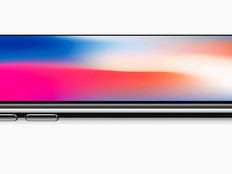Review: Toshiba Thrive
Something just feels right about Toshiba’s new Thrive tablet. The comfortable device, based on the Android 3.1 Honeycomb operating system, is so simple to use that you don’t need to bother with the user’s manual.
End-User Advantages
Let’s start with the basics: The Thrive measures about 11 inches long and 7 inches wide. The aspect ratio is thus a little larger (narrower and wider) than other tablets, which led me to use it mainly in the landscape orientation. The 10.1-inch backlit LED screen boasts 1280x800 pixels. At about 1.6 pounds and more than half an inch thick, the Thrive is on the heftier side of the tablet pool, but it’s comfortable in one hand or propped on your lap. The device’s Nvidia Tegra 2 chipset ensures strong performance.
There are also two cameras: 2 megapixels in the front and 5MP in the rear. Both cameras and the 720p HD video are serviceable but nothing to write home about.
The Honeycomb OS has a natural feel. Multiple applications can run simultaneously with just a flick of a finger. The applications scroll nicely, and the navigation controls in the lower right corner of the device make it easy to find menus or return to the previous screen. Overall, everything was very simple — both to find and to do.
Why It Works for IT
I’ve found that there are two kinds of tablets: those meant to be used by consumers, which offer little enterprise support, and those designed for the enterprise, which lack many of the features that users have grown to love. The Thrive is the first tablet I’ve tried that suits both.
Toshiba pre-installed Kaspersky Tablet Security antivirus protection and built-in encryption, so unless a user keys in the right personal identification number, the data on the device can’t be accessed. Toshiba’s File System Manager allows users to move files on and off the device without going through a third-party application manager. Users can even back up their settings to Google’s cloud storage.
The Thrive’s diverse connectivity options are especially valuable. The device has a mini-USB connector, as well as full USB, HDMI and SD card ports that are easily accessible on the top or side of the tablet. The ports are hidden behind rubberized plugs to keep them clean. The rubberized back can reduce slippage (and hence breakage), but can be removed to expose a user-replaceable battery.
Wireless connectivity is available through 802.11 a/b/g/n or Bluetooth. There’s currently no 3G/4G option, but one could easily tether a card through the USB port or use Bluetooth to connect to a mobile phone.
Disadvantages
While Toshiba does provide both video and audio enhancement, the sound quality is a bit inferior to other tablets. And for some reason, the volume rocker control on the top of the Thrive is counterintuitive: left is louder, right is softer, and the onscreen volume bar is reversed. It makes more sense if you hold the tablet in the portrait position, so perhaps this was simply a design choice.
I also found that when the tablet was plugged in and charging, it had trouble coming out of sleep mode. This is a known issue that Toshiba says it will solve with a software update.








